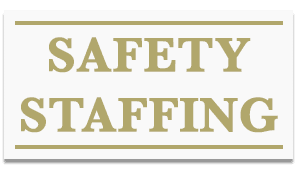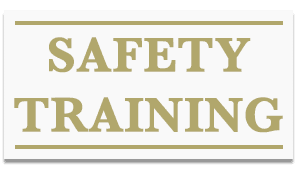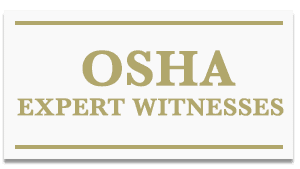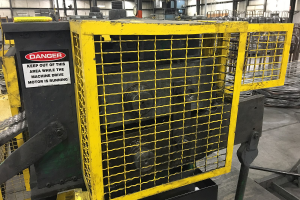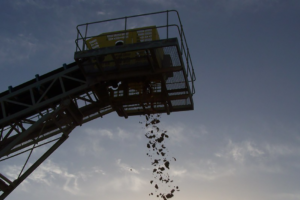OSHA Alert: How to Prepare for an OSHA Inspection
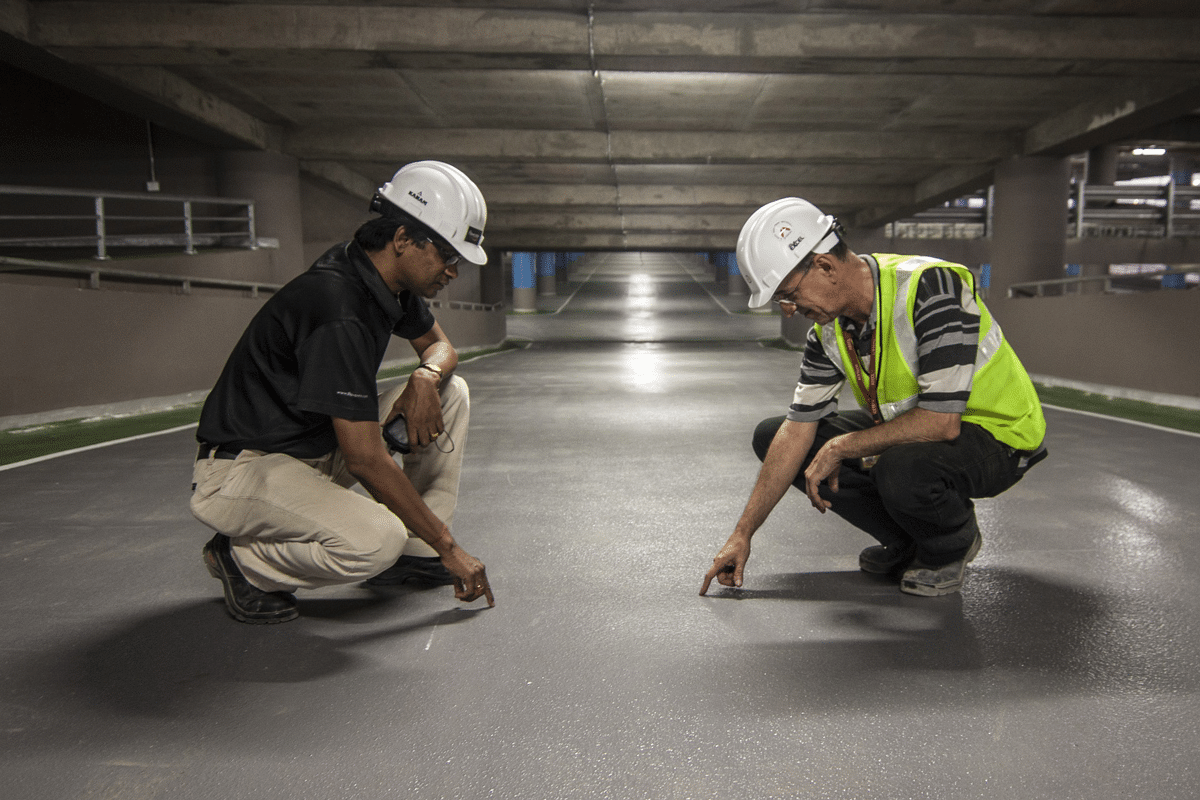
The following was prepared by the Sherman & Howard LLC law firm, www.shermanhoward.com.
Part I: Selecting a Company Representative
The most important step to take before an OSHA inspection even takes place is selecting a company representative. The company representative is the individual charged with representing the company’s interests during an OSHA inspection. The representative, ideally the Safety and Health Director or Manager or someone in upper management, should be well-versed in OSHA standards applicable to the business, health and safety conditions of the workplace under inspection, location of required records to be kept under OSHA (e.g. training records, OSHA 300 logs, written program etc.) and the company’s health and safety program. A well-versed representative is also familiar with OSHA’s own internal procedures for handling an OSHA inspection, the Field Inspection Reference Manual or FIRM at http://www.osha.gov/Firm_osha_toc/Firm_toc_by_sect.html. If the facility is in an OSHA state plan state, the person should be familiar with the FIRM of that particular state. A list of state plan programs is located at https://www.osha.gov/stateplans.
The company representative should accompany and supervise all aspects of OSHA’s inspection. This can be accomplished by asking the OSHA inspector to wait for the arrival of the designated representative before starting the inspection. In most cases, OSHA inspectors are willing to wait a reasonable time, up to one hour, before proceeding. Where the inspector refuses to wait or where it is impossible for the representative to personally appear, designate a back-up to fill in. The designated representative can then supervise and monitor the inspection by telephone, giving instructions to the back-up until he or she arrives on site.
The company representative should monitor and supervise the inspection to the maximum extent possible. This includes:
- Attending the opening and closing conferences.
- Determining the type of inspection being conducted and the intended scope. Types of inspections conducted include Imminent Danger, Fatality, Hospitalization/Amputation, Complaint, Referral, or General Schedule. The scope is determined by the type of inspection being conducted. General Scheduled inspections may include the entire work area. Complaints and Referral inspections should be limited to the area described in the complaint. Fatality and Hospitalization/Amputation inspections should be limited to the area where the incident occurred.
- Accompanying and recording all aspects of the walk-around inspection, including: areas of the workplace inspected, names of all employees and supervisors interviewed and identification of any photographs, measurements and samples taken. The representative’s notes of the inspection should remain confidential. They should not be given to the OSHA inspector.
- Photographing all areas of the facility inspected, making certain to take “side-by-side” photographs of all areas photographed or video-taped by OSHA.
- Responding to all document and other information requests by the OSHA inspector.
- Making sure that non-managerial employees are aware of their rights during an OSHA interview.
- Attending and assisting in all interviews of management employees.
- Keeping the inspection under control. The OSH Act provides that the inspection shall take place at “reasonable times and within reasonable limits.” Within the exercise of good judgment, the representative should not allow the inspection to unreasonably interfere with work in progress or run beyond normal working hours. “Partial” inspections should not be allowed to unnecessarily expand into “wall-to-wall” inspections.
- Never admitting violations or unsafe practices, but correcting observed violations as soon as the inspector departs. If the inspector points out an issue that is easily corrected (e.g. missing ground pin from an extension cord) the representative should correct it immediately and inform the inspector of the correction.
- Consulting with the company’s legal counsel about difficult or special problems, such as search warrants or subpoenas. As necessary, allow counsel to deal directly with the OSHA inspector.
- Being courteous and polite, but firmly exercising the company’s legal rights.
In the case of catastrophic accidents, including fatalities or accidents resulting in multiple serious injuries, special care must be taken when it comes to the designation of company representatives. OSHA inspections under these circumstances may last several weeks or months, involve multiple inspectors, involve the issuance of subpoenas for the production of records and testimony, and present a number of legal issues not present in a routine inspection. In many instances, OSHA citations resulting from fatality or catastrophe inspections can carry very significant penalties, some in excess of $1 million. Willful violations of OSHA standards resulting in death can carry criminal penalties. Because of the potential liability and added complexity and legal issues involved in a fatality or catastrophic accident, the company should insist that legal counsel be contacted immediately and, if at all possible, before OSHA is allowed to start its inspection or any information is provided. Legal counsel, or the designated representative acting with the advice of counsel, should then closely supervise and monitor all aspects of the inspection.
An effective company representative is essential to the company’s success in minimizing OSHA liability. What the representative says or does during an inspection — and what they don’t say or do — can have a significant impact on how quickly and smoothly the inspection goes and the number and severity of citations issued. Good documentation of what happened during the inspection is essential to refuting any citation issued. Without good documentation, especially photographs, the company and its attorneys may have no choice but to rely on OSHA’s file and photographs instead.
Advance preparation is everything. When OSHA arrives at the door, it may be too late to decide who handles the inspection and what they should do. Companies are urged to develop an OSHA inspection procedure, executed by a knowledgeable representative, before OSHA arrives.
Part II: The Opening Conference and Record Requests
The Opening Conference:
Most OSHA inspections start with an unannounced visit by a compliance officer and an Opening Conference. The purpose of an Opening Conference is to discuss what will happen during the inspection. Use the Opening Conference as an opportunity to start managing the inspection. Here are some tips: Decide if the company will request a search warrant before allowing OSHA to begin the inspection. Some companies always require a search warrant by policy. Others may decide to do so if the inspection appears to be going in an unwanted direction or if issues arise between the company and the inspector. How the inspection will be conducted after the warrant is executed will vary from inspector to inspector. The decision to request a warrant will be based on how well the company is prepared and what issues are raised in a complaint or a referral. If you’re unsure seek advice from counsel. Ask to see the inspector’s official credentials if he or she does not offer them. Identify your company’s representative designated to supervise the inspection. Inform the inspector that he or she should coordinate all inspection activities and requests through your representative, no one else.Don’t be afraid to ask questions. Ask what prompted the inspection (employee complaint, referral by another agency, etc.). Ask to see a copy of the written complaint if there is one. Confirm with the inspector what he or she wants to see and do (scope), and how long he or she expects to be at your workplace. Be courteous, but keep the inspection moving towards completion. If the inspection is the result of a complaint, ask the inspector to verify that the complaint was filed by a current employee by offering a roster of current employees for the inspector to review. Do not ask the inspector to reveal the name of the compliant. Reach an understanding that the inspection will be limited to the areas or conditions listed in the complaint or referral. For example, if an employee files a complaint about defective forklifts in the warehouse, then the inspection should be limited to forklifts in the warehouse, not other areas. The OSHA inspector will usually investigate other observed violations in “plain view” during the investigation, but politely object if the inspector wants to expand a limited investigation into a lengthy “wall-to-wall” inspection. Discuss any safety issues that may be encountered during the inspection, including personal protective equipment required by your company. Require the inspector to abide by all company safety rules. Do not expect the inspector to sign anything other than a simple visitor’s log. Identify areas in the workplace or documents that might reveal confidential trade secrets and get the inspector’s confirmation that photographs of confidential areas or documents will be noted as “trade secret” in OSHA’s file. Send a confirming letter or email if necessary. Take good notes of all matters discussed at the Opening Conference.
Records Requests
During the Opening Conference, or some time during the inspection, the inspector will ask to see certain records and documents. To avoid later misunderstandings, it is a good practice to have OSHA put these requests in writing or an email. Make sure you understand when and where OSHA wants the documents to be produced. As a general rule, do not volunteer documents not specifically requested. In responding to document requests, distinguish between records required to be maintained and produced under OSHA’s standards and those that are not. As to required documents, you are required to produce, as examples, your official injury and illness logs (OSHA 300, 301, 300A) or a Hazard Communication Program. Failure to produce the required records on a timely basis may result in citations and penalties. The company representative should be familiar with required records and be ready to produce them as requested. Production of records not required by OSHA’s standards is another matter. By complying with such requests, you are possibly helping the inspector to find and document violations, expand the investigation, or provide damaging evidence against your company. As to these documents, the better practice is to defer all requests until you have had a chance to look the documents over and/or review them with upper management or legal counsel. Objections may be made on the grounds that OSHA’s request is overly burdensome (too much time and effort to comply), irrelevant to the investigation, or legally protected from disclosure. Before producing any records, make sure that they are complete and accurate. For example, are your OSHA 300 forms completely filled out? Are they accurate? Make corrections as necessary before producing the documents. Finally, keep a copy and list of all documents provided.
Part III: The Walk around Inspection
The Walk around Inspection:
The actual inspection of the workplace is the most critical phase of OSHA’s inspection. In many cases, all of OSHA’s evidence as to whether a violation exists results from the efforts of the inspector during the walk around inspection. Here are points to remember when it comes to the walk around inspection: The law provides that a representative of the employer shall be given an opportunity to accompany the inspector. Always exercise this right. As we have discussed in previous updates, employers should designate a company representative far in advance of any OSHA inspection. If that representative is not immediately available when the OSHA inspector arrives, request that the inspector wait patiently until that representative can arrive to begin the inspection. The law also provides that a representative authorized by the employees, usually a union representative, shall have the right to accompany the inspection. Generally the employer has no say in the selection of the employee representative.Typically the inspector will photograph or videotape the workplace, take critical measurements and conduct environmental samplings, such as air samples or noise measurements, depending on the type of inspection involved. Unless trade secrets are involved, the employer generally has no right to object.If the inspector wishes to inspect areas that are not related to the purpose of the inspection, the employer representative should inquire as to the reason for such an inspection.Caution should be exercised if the inspector attempts to videotape statements by employer representatives. Politely inform the inspector that you do not wish to be videotaped.The employer representative should take his or her own photographs and measurements either during or immediately after the OSHA inspection. Also, take good notes of what the inspector does during the inspection.Complex health inspections, involving air contaminants, noise or “ergonomic hazards” pose special issues as the employer representative may not have the expertise to effectively monitor or replicate OSHA’s scientific monitoring. In such cases, the employer should consider designating its own expert to accompany and monitor those portions of the inspection and, if appropriate, do side-by-side testing and observation.In many cases, unsafe conditions are observed during the walk around inspection. If possible, the employer should always correct unsafe conditions observed during the inspection as soon as possible or after the inspector departs. In the event a citation is issued, this corrective action will demonstrate the employer’s good faith and may result in a lower penalty. On the other hand, failure to correct an unsafe condition pointed out by the inspector could result in higher penalties or a willful violation.
Part IV: Employee and Supervisor Interviews
OSHA interviews are one of the most critical aspects of the inspection. An alarming number of citations are based on statements of employees or supervisors to the OSHA inspector during the inspection or formal interviews. Advance preparation for these interviews can lessen a company’s liability.
The guidelines for employee and supervisor interviews are different.
Employee Interviews
The OSHA Act gives employees the right to speak privately with OSHA. For that reason, employer representatives are generally not entitled to be present for non-supervisory interviews. “Non-supervisory” employees are typically defined as those without the authority to hire, fire, discipline or direct the work. Employers should be guided by their own determination of which employees are considered supervisory. In some cases, lead employees or foremen are considered supervisory employees, as are safety directors, salaried managers and professionals. Get advice from counsel if you are in doubt.
Even though employer representatives are not often present during employee interviews, they can and should take the following actions to prepare employees: Inform employees that they have the right to speak or not speak to OSHA. Inform employees they may request a representative, including a supervisor, a union representative, or an interpreter, to sit in on the interview. Understand, however, that OSHA may resist the presence of any employer representative during the interview.Put employees at ease and give them a “heads-up” as to what the OSHA inspector is likely to ask. For example, employees are almost always quizzed on their safety training or facts surrounding any alleged violations. Advise employees to tell the truth.Intercede on behalf of employees who may be distraught or physically unable to speak with OSHA, particularly after a fatality or catastrophic accident. Employees and supervisors should not be interviewed until they feel they are physically and emotionally able to do so.Inform employees of their right to request that they not be tape-recorded and that they have the right to bring their own tape recorder. Conduct a voluntary debriefing of all employees interviewed by OSHA.
When informing employees of their rights and/or debriefing them, employers must avoid any pressure, coercion or retaliation. The OSH Act prohibits retaliation or discrimination against an employee participating in an OSHA inspection, including OSHA interviews. Always tell employees that it is their free choice as to how they wish to respond to an OSHA interview request – you are simply advising them of their rights.
Supervisor Interviews
Interviews of management and supervisory employees are another matter. Unlike non-supervisory employees, the statements and admissions of a supervisor may legally bind the company. In responding to management interviews, the following guidelines should be observed: The employer’s representative has the right to be present for supervisor or management interviews and should always exercise that right. In a fatality, catastrophe or other inspection involving significant liability, legal counsel should prepare and attend all management interviews. Besides providing moral support, the representative or counsel can assist the supervisor to make sure that questions are clearly asked and correctly answered.Where possible, minimize extensive management interviews by having the designated employer representative respond OSHA’s to requests for information.Management witnesses should be prepared in advance as to possible subject areas during their interview, and the “do’s and don’ts” for giving testimony, including just answering the questions, not volunteering, avoiding speculation and the importance of telling the truth. During the interview, or anytime during the inspection, avoid admitting a condition or observation is a violation or hazardous condition.Supervisors also have the right not to be tape recorded, or to bring their own tape recorder.Signed statements are sometimes obtained by the inspector. Because these statements are drafted in the inspector’s own words, counsel or the employer representative should make certain that the statements are correct in all respects before the witness is allowed to sign. Make sure that corrections are made as necessary.
Part V: The Closing
Conference and the Appeals Process Closing Conference
At the conclusion of the inspection, the inspector will hold a closing conference to discuss the observed violations. Here are some tips: Don’t be afraid to ask questions: What specific standards are being cited? Why? What is the classification (serious, repeat, etc.)? How much is the penalty? Often, the inspector will not commit to the classification or the penalty, claiming that the final determination is up to his or her supervisor. It never hurts to ask. Attempts to argue or settle the citations with the inspector at the closing conference are usually unsuccessful. Instead, the inspector will encourage you to attend an informal settlement conference after receipt of the citations.Even if you agree with the proposed citations, avoid admitting violations or recognizing hazards. There may be defenses to the citations that you have not considered. Tell the inspector where to send the citations.Take good notes at the closing conference.If you believe the OSHA inspector is mistaken about a particular issue offer clarification or provide additional documentation that could resolve the issue. Typically citations are mailed to the employer several days after the closing conference. All citations must be issued within six months of the start of the inspection.
Upon receipt of the citations, the employer must post a copy at the workplace inspected. If the work is completed, for example at a construction site, then the citations should be posted at the employer’s main office. The citations must be posted until the violations are abated, or for three working days, whichever is longer. Failure to observe these posting requirements may result in additional citations. Be sure to read the citation package in it’s entirety. Requirements and timeframes may vary if the inspection is conducted by a state plan state program.
Appeal Procedures
Employers have 15 working days from the receipt of a citation to begin contesting the citations. Again, read all of the information included with the citations as this contest period may vary from state to state. Prior to that time, you may request an informal settlement conference with the OSHA Area Office to negotiate a settlement. In most cases, a reduction of the assessed penalty or a modification of the abatement date can be obtained. It is also possible to have the citation withdrawn or re-categorized to a lesser classification, i.e., from Serious to Other. Settlements can also be reached after the citations are contested.
Formal appeals are initiated by filing a “Notice of Contest” with the OSHA Area Director within 15 working days of receipt of the citations. An employer may contest the violation, the proposed penalties, the abatement deadline, or all three. The best practice is to contest all three. Citations not timely contested may not be appealed, and no extensions of time are available. To avoid default, employers should watch for the citations in the mail following the closing conference and then make certain that the 15-working-day contest deadline (may be different in state plan states) is strictly observed.
The filing of a Notice of Contest stops the abatement deadline. The abatement period does not begin to run again until the case is settled or the Review Commission or the Court issues a final order affirming the violation.
Once a Notice has been filed with the Area Director, OSHA transfers the case to its attorneys in the Solicitor’s Office of the U.S. Department of Labor. The case is also sent to the Federal Occupational Safety & Health Review Commission, a separate federal agency charged with adjudicating contested citations. The Review Commission assigns the case to one of many administrative law judges located throughout the country.
Procedures before administrative law judges are similar to those in many courts. Pleadings, pre-hearing motions, discovery, hearing and post-hearing procedures are governed by the Review Commission’s own Rules of Procedures. For small cases, Simplified Proceedings are available. If the case does not settle, a hearing before the administrative law judge will usually be held within 9-12 months after the citations are issued. The judge issues a written decision affirming or denying the citations and, for affirmed citations, setting the penalty and the abatement date.
Review of administrative law judge decisions is conducted by the three-member Review Commission in Washington, D.C. Although any party may request review, or any member of the Commission may call the decision on his or her own motion, review is not a matter of right. Appeals of Review Commission decisions are taken directly to the U.S. Court of Appeals. The review of citations issued in OSHA state plan states vary from state to state. Read the documents included with the citations or visit the state program website. Each of these states operates independently and with minimal federal oversight. There are currently 22 State Plans covering both private sector and state and local government workers, and there are 6 State Plans covering only state and local government workers. To review a list of state plan states visit https://www.osha.gov/stateplans
